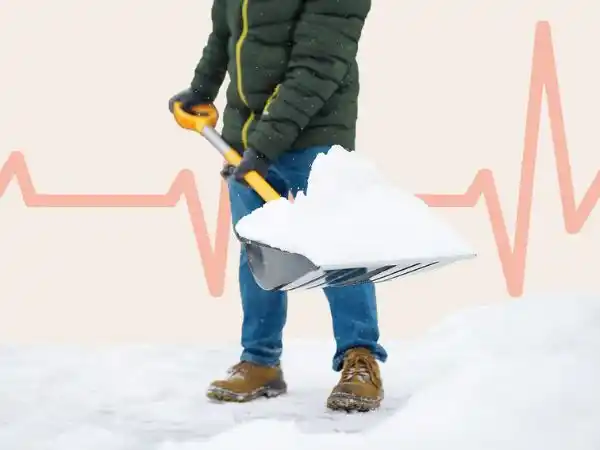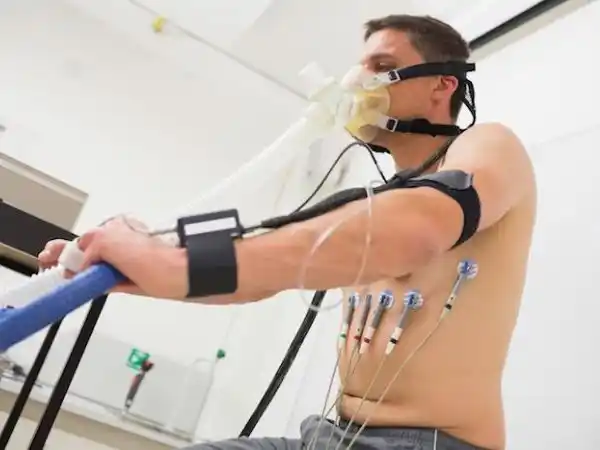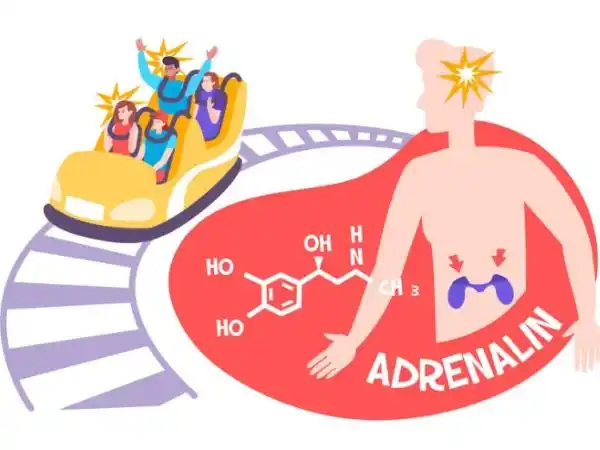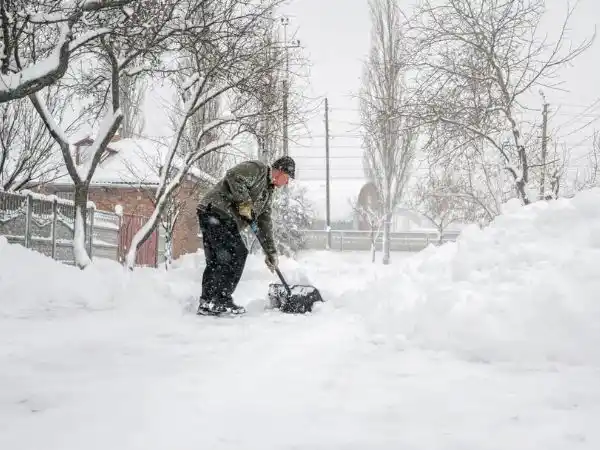Why Does Heart Risk Increase By Snow Shoveling?
Snow shoveling is a task everyone anticipates doing in winter, but most people take it with a lot of reluctance and fear. Attempting snow shoveling is quite an easy job, however, it can fire significant serious risks and, not to mention, it has severity. Each year, a fairly significant increase in hospitals is noted concerning cardiac emergencies, directly attributable to the rigorous activities of snow shoveling heart risk.
Why is snow shoveling such a risky business for your heart? Indeed, this article seeks to investigate, dissect, and explain the snow shoveling heart risk. It aims to fully understand how serious the issue can be by looking at the demands of work and environmental conditions brought about by such wintry tasks. This understanding is necessary whether you are an occasional snow shoveler or a pro at it to keep you safe in the cold months.
Dangers of Sudden Physical Effort in Snow Shoveling
Snow shoveling is more than a path-clearing practice. It is an exercise that combines spunk with high-energy physical effort in the cold outdoor elements. This sudden burst of activity is a cardiovascular challenge, making your heart pump faster and beat stronger to get oxygen to exhausted muscles.

The American Heart Association states that this work can be dangerous because about 1,200 Americans suffer heart attacks every year while shoveling snow. Research explains that men older than 50 years are at exceptionally high risk for heart activity and that the incidence of heart attacks increases a staggering 16 percent during a snowstorm. This tense physical effort, combined with the icy effects of cold weather, creates a highly significant risk of an event related to the snow shoveling heart risk activity.
Cold Weather Constricts Blood Vessels

One of the significant physical responses to the very low temperature of snowy activities is constriction of blood vessels, which results in a significant action- a rise in blood pressure and fluid increases. Thus, the heart’s pumping capacity increases in distributing blood throughout the body. A study talks about an unfortunate statement where blood pressure rises by, on average, 10—15% in such cold conditions. So, the strain increases on the heart, in addition to the snow shoveling heart risk.
In addition, the cold environment stimulates the body’s defence mechanism by producing adrenaline, which speeds up heartbeats and encourages blood clotting. The overall effect is increased stress on the heart’s performance. Therefore, combining cold temperatures with increased blood pressure and heart rate creates a dangerous scenario for people carrying out such winter chores.
The Weight of Snow Puts a Strain on the Heart

However, what looks like light and airy snow is a surprising bulk, particularly wet snow. From 10 to 25 pounds, a shovelful of this wintry precipitation may weigh, which doesn’t sound like much at all. But the repeated lifting of this ridiculous weight works for all the major muscle groups and rapidly upsets the heart rate and blood pressure. Vigorous exercise like this is a considerable hazard to the health of the heart, particularly among individuals with preexisting heart illnesses. Thus, such exercise under extreme weight is a snow shoveling heart risk due to possible combinations of effort and heavyweight.
The Significance of Warm-up Before Removal of Snow for Cardiac Stress Reduction

Winter covers the land with snow; many then try to shovel driveways and sidewalks but fail to warm up. Shoveling suddenly after resting presents an immediate serious demand on the heart. Sometimes, the sudden increased activity causes ischemia, a medical condition with insufficient oxygen supply to the heart muscle.
A striking report reveals that over 70% of heart attacks due to snow shoveling occur within the first critical ten minutes of the activity. These statistics may look alarming; however, they generally highlight the risk of warming up first to work. The effects of cold can worsen as cold stress adds to the cardiovascular burden; this is usually applicable when one shovels in cold temperatures. A few simple moments to facilitate the flow of stretches and heart rate increase should ameliorate the snow shoveling heart risk during this strenuous photobiological management.
Hazards that are Hidden from Sufferers with Anomalous Heart Conditions

People who harbour hidden heart defects often find out that even the most innocuous activity can prove fatal. Snow shoveling, for example, maybe a commonplace chore this winter, but it could lead to fatal complications for people who have thromboangiitis obliterans (i.e., coronary artery disease) or hypertension. Such conditions include the warnings of dangers emitted by the National Heart, Lung, and Blood Institute when applied to CAD cases; the risk here is 34% more than that of having a heart event while executing heavy tasks such as snow shoveling.
This fact is a stark reminder that those with hearts should rely not just on knowing the limits of their health but proactively taking pre-emptive measures to avoid the risks of such strenuous activities. To stay safe during winter, learning about the perils posed by snow shoveling and when one needs to call for help or find a less strenuous alternative is necessary.
Hidden Dangers for People with Heart Disease

Even mild exertion, such as moving snow, can be fraught with danger if a person has any heart problems. For example, snow shoveling can cause disastrous problems for patients suffering from CAD or even high blood pressure. The National Heart, Lung, and Blood Institute warned that people diagnosed with CAD have a 34 percent chance of heart problems during strenuous activities like shoveling snow.
This vital statistic should remind heart patients of their limits. They should develop strategies to minimize the risks associated with heavy exercise. Understanding the dangers of snow shoveling, when to ask for help, and when to opt for a safer alternative is vital to remaining healthy during winter.
The Role of Adrenaline and Stress Hormones

Shoveling snow is challenging on the body and, when done in such a cold environment, induces much stress. Your body then releases adrenaline-induced heartbeats, with blood being pumped at faster rates for higher blood pressure while you shovel. This puts an extra strain on the arteries and the heart. Shoveling snow, as revealed in a European Heart Journal study, can raise adrenaline levels up to 20% to 30%, thus exposing one to heart disease threats.
Cold Weather Can Mask the Symptoms of Heart Attack

It is challenging to assess symptoms of heart attacks with cold coyness. Cold numbness in arms and legs is likely, and additional tiredness may accompany numbness. These features prevent you from attending to the throbbing patients in your chest or struggling to breathe. In an article published in the British Medical Journal, it was found that 18 percent of people did not recognize their symptoms indicative of a heart attack as fast when the outdoor temperature was low, delaying prompt assistance.
Impact on Sedentary Individuals
For a sedentary person, clearing snow suddenly becomes an activity that engages the entire body. According to a 2021 study in the Journal of Physical Activity and Health, inactive people had a 40 percent higher chance of developing heart problems when they engaged in high-exertion activities they were not accustomed to regularly doing. The combination of hard work and cold weather dramatically increases the risk of heart problems for these individuals.
Increased Age and Gender-Induced Risks
Men aged 45 and above, as well as women aged 55 and older, stand at risk of heart attack from snow shoveling, given the changes that come with age in a person’s heart health. Research at the American College of Cardiology indicates that almost 85% of snow shoveling deaths occurred in men aged 50 and older. This group thus requires specific consideration for winter chores.
Reduce the Risk of Heart Attack When Shoveling Snow

- Warm-Up: Warm up for not less than 10 minutes before the snow is shoveled. This serves to prepare your heart and muscles.
- Pace Yourself: Rest for a while in about 10-15 15-minute intervals to avoid overdoing it.
- Ergonomic Tools: Get lightweight, ergonomic shovels that save the body’s strain.
- Stay Hydrated: Be sure to drink water before and after sleeting to keep hydrated, which helps your heart.
- Know Your Limits: If you have heart issues, don’t shovel; call for help or hire someone.
Conclusion
Snow shoveling may sound simple, but it could prove fatal for your heart. Cold temperatures force blood vessels to perform arduous work, and lifting heavy snow creates an additional burden for an individual. These are genuine possibilities, so do not take them too lightly. Informing oneself regarding the perils of snow shoveling and taking appropriate precautions can protect one’s own life and that of a loved one. If in doubt, consult the doctor before embarking upon shoveling snow.


